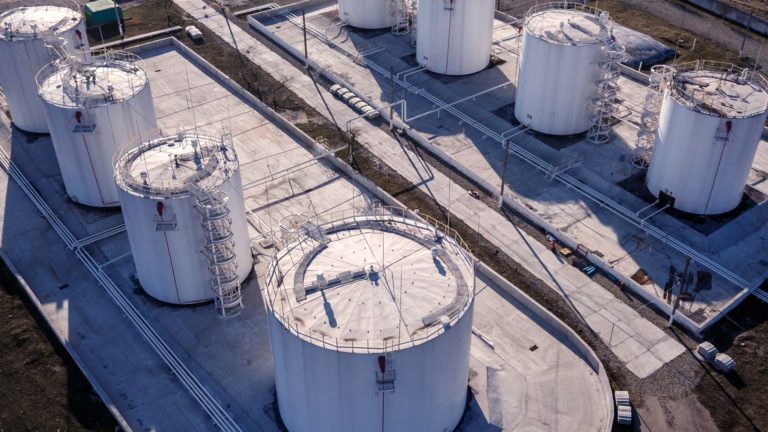Comprehending the Trick Steps in Tank Welding Inspection Procedures
Comprehending the Trick Steps in Tank Welding Inspection Procedures
Blog Article
The Essential Function of Storage Tank Welding Evaluation in Ensuring Structural Honesty and Safety Compliance in Industrial Applications
In the realm of industrial applications, storage tank welding inspection emerges as a pivotal aspect in securing structural stability and making sure conformity with security laws. Utilizing a combination of methods such as aesthetic assessments and advanced screening approaches, these assessments offer to determine and minimize possible flaws before they escalate into substantial dangers.
Relevance of Tank Welding Inspection

Making sure compliance with industry criteria and regulations is an additional considerable facet of container welding inspection. Regulative bodies mandate stringent standards for the building and upkeep of storage space containers, and detailed assessments help companies comply with these requirements. Non-compliance can result in extreme fines, including penalties and closures, additionally highlighting the need for rigorous examination protocols.
Moreover, container welding evaluation plays a crucial duty in preserving functional effectiveness. In recap, the relevance of tank welding inspection exists in its capacity to safeguard public health and wellness, shield the environment, and guarantee compliance with regulatory frameworks.
Trick Evaluation Strategies
Efficient container welding assessment relies upon a variety of crucial strategies that guarantee complete assessment of weld high quality and architectural stability. Among one of the most common methods are aesthetic examination, ultrasonic screening, radiographic screening, and magnetic fragment testing - Tank Welding Inspection. Each approach supplies one-of-a-kind advantages in examining various facets of the weld
Aesthetic evaluation works as the very first line of protection, permitting assessors to identify surface issues, abnormalities, or disparities in the weld grain. Ultrasonic screening utilizes high-frequency audio waves to find internal defects, such as splits or spaces, offering an extensive evaluation of weld integrity. This approach is especially reliable in detecting issues that might not show up on the surface area.
Radiographic screening utilizes X-rays or gamma rays to generate photos of the welds, exposing internal interruptions and providing an irreversible document for future referral. This method is extremely reliable for important applications where the risk of failure should be decreased.
Lastly, magnetic fragment screening is utilized to recognize surface area and near-surface defects in ferromagnetic products. By applying magnetic areas and fine iron particles, inspectors can pinpoint gaps that could compromise the structural integrity of the storage tank. With each other, these techniques develop a durable structure for making certain high-quality welds in commercial applications.
Compliance With Safety Requirements

Regular inspections play a critical duty in guaranteeing compliance by determining possible failings or variances from recommended standards. Inspectors are educated to review weld high quality, verify material specs, and assess the general architectural stability of containers. Their proficiency is essential in making certain that welding procedures fulfill the needed safety requirements.
Furthermore, conformity with safety and security criteria not just shields workers however additionally safeguards the setting from prospective hazards such as leaks or tragic failings. Organizations that focus on safety compliance are much better positioned to minimize risks, improve operational effectiveness, and cultivate a society of safety within their workforce. In recap, preserving extensive compliance with Visit Website safety requirements is crucial for the successful procedure of storage tank welding activities in industrial setups.
Advantages of Regular Assessments
Regular inspections are integral to keeping the architectural honesty and security of bonded storage tanks. These examinations supply a methodical technique to recognizing possible problems or weaknesses in the welds, ensuring that any type of concerns are attended to prior to they escalate into substantial failures. By performing regular evaluations, companies can discover rust, fatigue, and various other kinds of deterioration that may jeopardize container efficiency.
Furthermore, regular examinations contribute to conformity with market laws and requirements. Abiding by these standards not only minimizes legal threats yet additionally enhances the organization's credibility for safety and reliability. Routine evaluations foster a positive safety society, urging staff members to identify and prioritize the importance of equipment integrity.

Study and Real-World Applications
Situation researches and real-world applications highlight the concrete impact of efficient storage tank welding inspection techniques. Complying with the implementation of rigorous welding examination procedures, including visual and ultrasonic screening, the facility determined important problems in weld seams Discover More that could have led to disastrous failings.
Likewise, a water treatment plant executed a detailed examination program for its storage tank welding operations - Tank Welding Inspection. By including non-destructive screening methods, the plant was able to identify early signs of rust and exhaustion in weld joints. This prompt intervention extended the lifespan of the tanks and guaranteed compliance with security regulations, hence protecting public health
These situation studies highlight the value of routine and methodical storage tank welding assessments. By focusing on these practices, sectors can mitigate dangers, boost architectural honesty, and guarantee conformity with safety and security requirements, eventually leading to enhanced functional performance and lowered liabilities.

Verdict
In verdict, tank welding examination is click reference a vital element of maintaining structural integrity and safety and security in industrial applications. Utilizing different inspection strategies ensures early discovery of prospective flaws, therefore stopping tragic failures.
Report this page